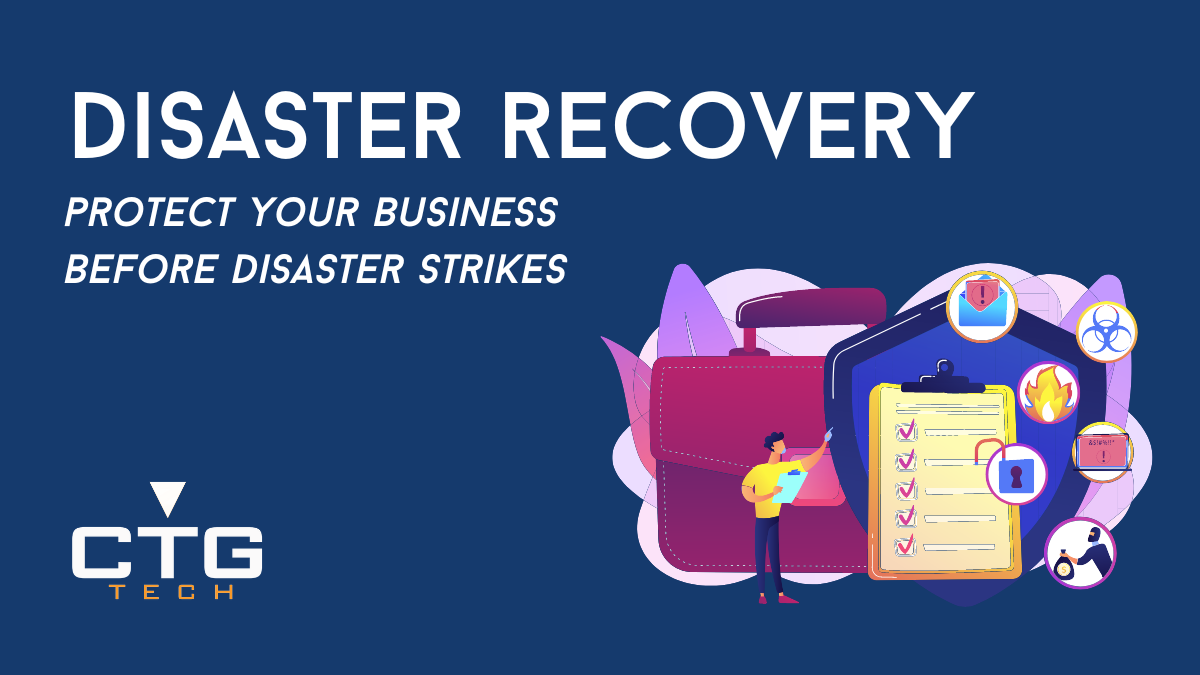Developing a Disaster Recovery Plan
A Disaster Recovery Plan is your company’s method of regaining access and functionality to your IT infrastructure after events like a natural disaster, cyber attack, or even business disruptions related to the COVID-19 pandemic.
Recovery plans are essential for any business that relies on technology to function. By redirecting technology resources and minimizing downtime, you can help prevent disasters before they start.
When creating a disaster recovery plan, you’ll need to consider various factors, such as what type of disasters are most likely to occur, what data needs to be backed up and how often, and how you will keep your employees productive during any unexpected downtime.
There are many different ways to approach disaster recovery, so it’s important to work with a trusted partner who can help you create a plan that fits your specific needs.
Most Likely Threats
Depending on the size, geographic location, and industry of your business, the primary threats your infrastructure faces will vary. For example, a company located in an area prone to hurricanes will likely prioritize plans for dealing with power outages and flooding. At the same time, a business in a more seismically-active region will need to be prepared for the possibility of earthquakes.
That said, there are some disasters that can occur almost anywhere, such as fires and cyber attacks. No matter what type of business you have or where it’s located, it’s important to have a plan for dealing with these types of events.
Data Backup and Recovery
One of the most important aspects of any disaster recovery plan is data backup and recovery. In the event of a major disaster, it’s essential that you have a recent backup of all your critical data so that you can restore your systems quickly and get back to business.
There are many different ways to back up data, such as using on-site storage devices, cloud-based solutions, or a combination of both. The method you choose will depend on your specific needs, but it’s important to ensure that your backups are stored in a safe location that can be accessed easily in the event of an emergency.
You’ll also need to decide how often to back up your data. For most businesses, daily backups are sufficient. However, if you have mission-critical data that changes frequently, you may want to consider backing up more often.
Employee Productivity During Downtime
In addition to backing up data, it’s also important to have a plan for keeping your employees productive during any unexpected downtime. This may include providing them with access to essential files and applications remotely, setting up a temporary work area, or giving them the ability to work offline.
No matter what type of business you have, it’s essential to be prepared for the possibility of a disaster. By working with a trusted partner like CTG Tech and taking the time to create a comprehensive plan, you can ensure that your business is able to quickly recover from any event.
Contact us today to learn more about our disaster recovery services!
